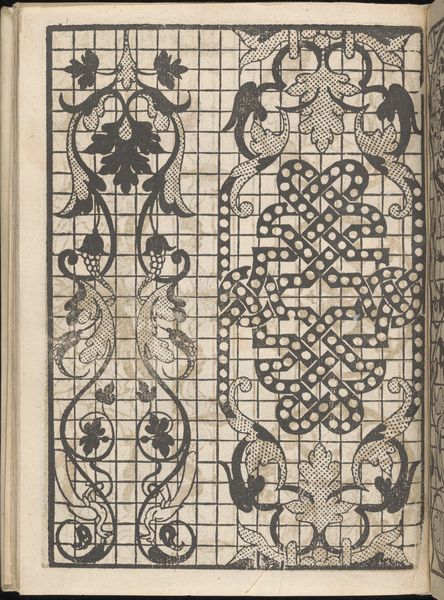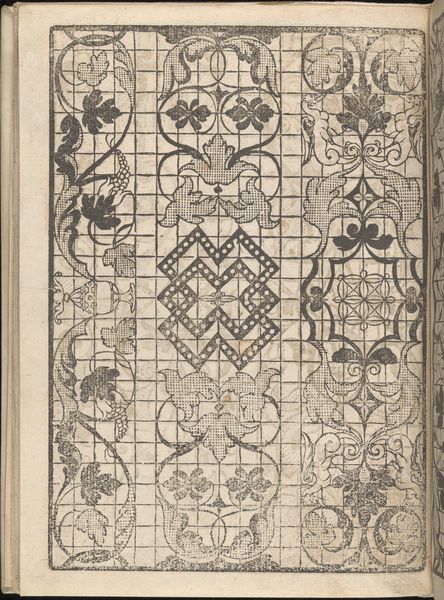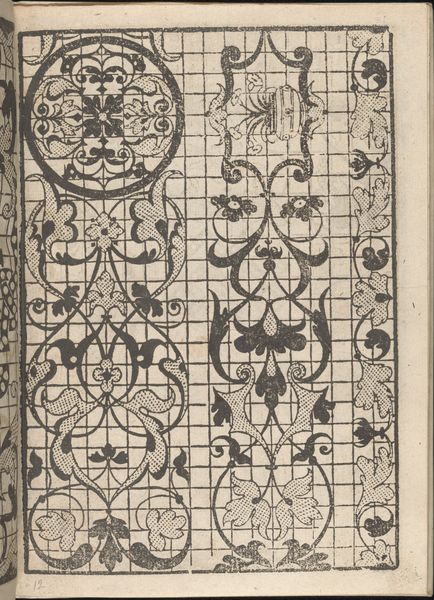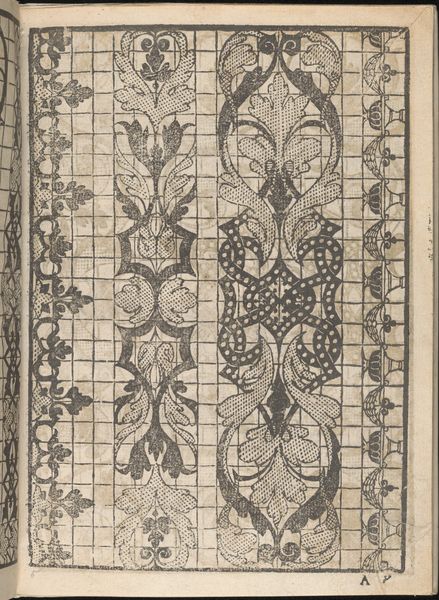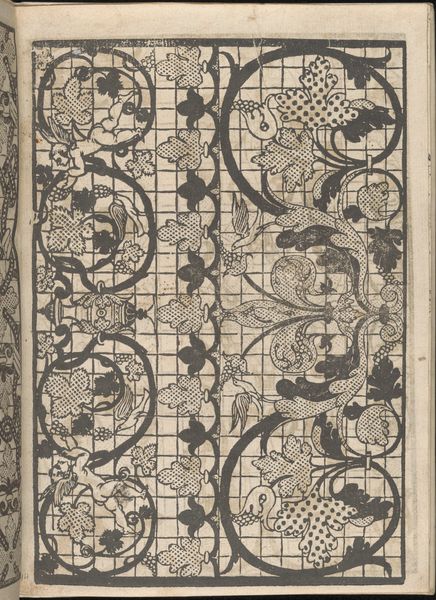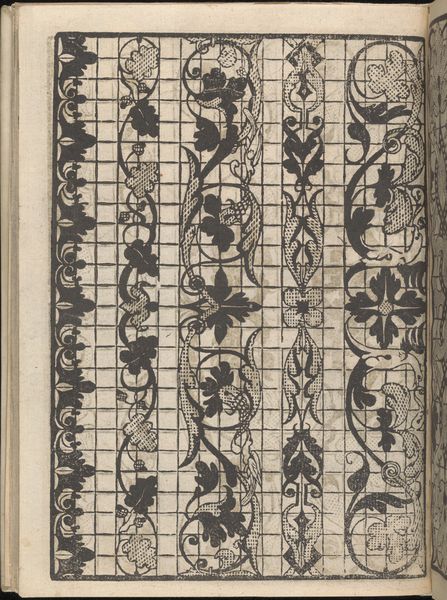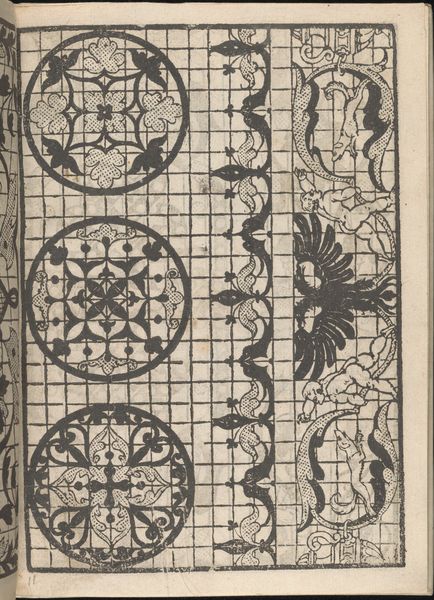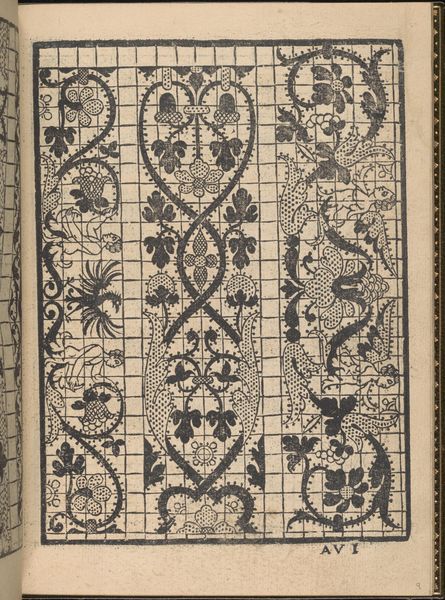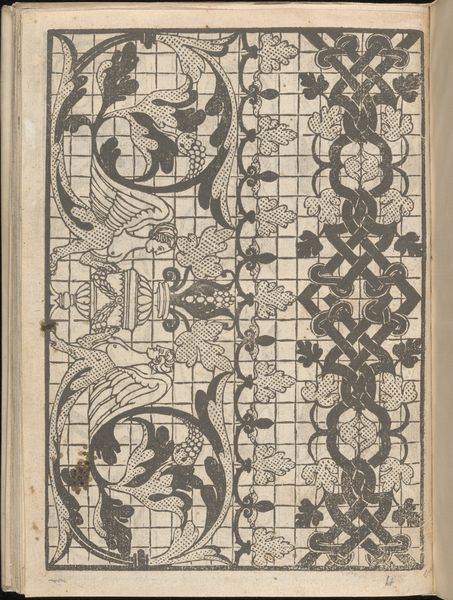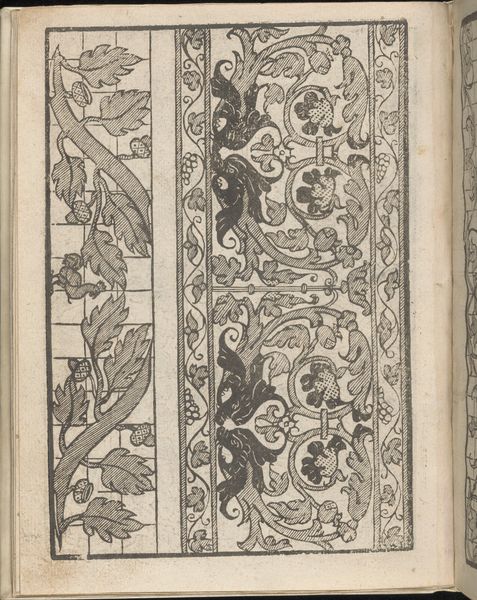
Splendore delle virtuose giovani, page 10 (verso) 1564
0:00
0:00
drawing, graphic-art, print, woodcut, engraving
#
drawing
#
graphic-art
#
pen drawing
# print
#
book
#
11_renaissance
#
woodcut
#
sketchbook art
#
engraving
Dimensions: Overall: 7 1/2 x 5 1/2 in. (19 x 14 cm)
Copyright: Public Domain
Editor: Here we have a page from "Splendore delle virtuose giovani" by Iseppo Foresto, created in 1564. It looks like a woodcut, filled with intricate floral and geometric patterns. The precision is amazing. What strikes you most about this piece? Curator: I find myself drawn to the grid. It underlies everything, doesn’t it? A relentless, repeating structure both supporting and confining these organic motifs. The grid speaks to the labor involved; each line, each intersection, a testament to the process. Think of the skilled hands meticulously carving away at the wood. What does that repeated element suggest to you? Editor: Well, it makes me think of textiles, like the kind of gridded fabric used for embroidery. And the floral patterns remind me of lace designs, so it feels like this might be a pattern book. Curator: Exactly. And who would have used such a book? Consider the Splendore’s title, “Splendor of Virtuous Young Women.” This wasn't ‘high art’; this was a tool, a resource for young women learning skills deemed appropriate and valuable at the time. Skills relating to textile production in many ways. It highlights the link between artistic skill and craft production, doesn’t it? How the supposedly high art of design fuelled domestic and artisanal labor. Editor: So, it blurs the line between art and craft by serving as both? A beautiful object, and also functional, used to guide production. It makes me think about how much we value function in art today versus pure aesthetics. Curator: Precisely. Think about the economic impact of textiles during the Renaissance. This little book represents a whole world of production, labor, and consumption. It underscores how art, even in its most seemingly decorative form, is deeply intertwined with material culture. Editor: That's given me a whole new perspective. Seeing the work through the lens of its creation and social use really brings it to life. Thanks for sharing! Curator: Indeed! Analyzing artistic intent combined with tangible functionality broadens the implications behind works of art like this.
Comments
No comments
Be the first to comment and join the conversation on the ultimate creative platform.
